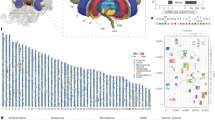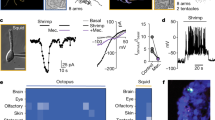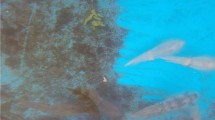Abstract
A VARIETY of cephalopods, both octopods and decapods (squids), have extra-ocular photoreceptors, as structural, biochemical1–4 and electrophysiological studies5 have shown. In the octopods these receptors lie in the mantle cavity on each stellate ganglion, and in the squids they lie, again bilaterally, underneath the cranial cartilaginous casing on and below the optic tract3. Although we recorded generator potentials intracellularly from the receptors in the octopus, Eledone and Octopus, we found repetitive firing rarely during steady state illumination. And recently in the squid Todarodes we have been able to impale cells with micropipette electrodes, but observed only a generator potential; thus we did not establish whether or not impulses are evoked by light and propagated to the central nervous system. We therefore tried recording directly from the associated nerve fibres since impalement may cause depolarization and thus block the repetitively firing region of the neurone. These studies have shown that propagated action potentials do arise from the photoreceptor cell body on illumination and are conducted down the axons to the central nervous system. This new fact indicates further that this system of photoreceptors may play a significant physiological role in cephalopods.
This is a preview of subscription content, access via your institution
Access options
Subscribe to this journal
Receive 51 print issues and online access
$199.00 per year
only $3.90 per issue
Buy this article
- Purchase on SpringerLink
- Instant access to full article PDF
Prices may be subject to local taxes which are calculated during checkout
Similar content being viewed by others
References
Nishioka, R. S., Yasumasu, I., Packard, A., Bern, H., and Young, J. Z., Z. Zellforsch., 75, 301 (1966).
Messenger, J. B., Nature, 213, 836 (1967).
Baumann, F., Mauro, A., Millecchia, R., Nightingale, S., and Young, J. Z., Brain Res., 21, 275 (1970).
Perrelet, A., and Mauro, A., Brain Res., 37, 161 (1972).
Mauro, A., and Baumann, F., Nature, 220, 1332 (1968).
MacNichol, jun., E. F., and Love, W. E., Science, 132, 737 (1960).
Dodt, E., and Jacobson, M., J. Neurophysiol., 26, 756 (1963).
Morita, Y., and Dodt, E., Experientia, 21, 221 (1965).
Hamasaki, D. I., and Dodt, E., Arch. Ges. Physiol., 313, 19 (1969).
Dodt, E., Experientia, 19, 642 (1963).
Morita, Y., Arch. Ges. Physiol., 289, 155 (1966).
Hamasaki, D. I., and Streck, P., Vision Res., 11, 189 (1971).
Rudeberg, Cl., Z. Zellforsch., 96, 548 (1969).
The Pineal Gland (edit. by Wolstenholme, G. E. W., and Knight, J.) (Churchill Livingstone, Edinburgh and London, 1971).
Author information
Authors and Affiliations
Rights and permissions
About this article
Cite this article
MAURO, A., STEN-KNUDSEN, O. Light-evoked Impulses from Extra-ocular Photoreceptors in the Squid Todarodes. Nature 237, 342–343 (1972). https://doi.org/10.1038/237342a0
Received:
Revised:
Issue date:
DOI: https://doi.org/10.1038/237342a0
This article is cited by
-
Morphology and function of the photoexcitable neurones in the central ganglia ofOnchidium verruculatum
Journal of Comparative Physiology ? A (1975)



